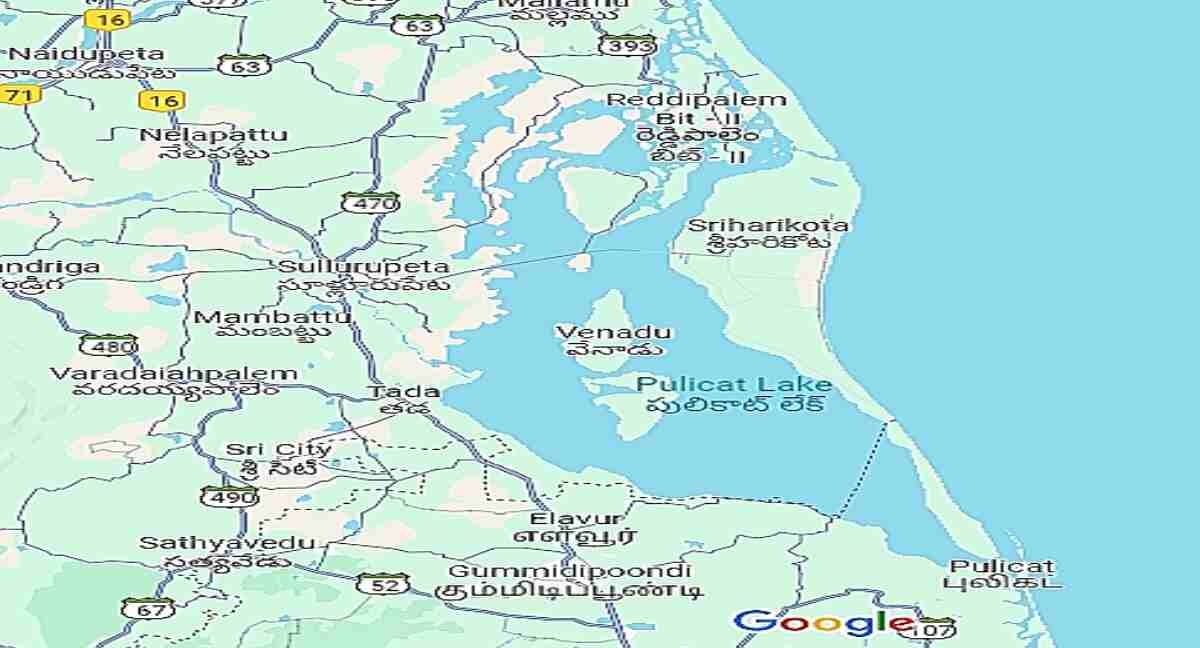Hooghly Matlah Estuary: It is located within the State of West Bengal, occupies the marshy deltaic area called the Sunderbans. Sunderbans at the Ganga-Brahmaputra delta are regarded as the largest single mangrove jungle of the world transcending the political boundaries of India and Bangladesh and occupying a total of 10,000 km2.
Hooghly Matlah Estuary
The portion falling in India occupies over 4,170 km2 (23,400 ha). The total approximate area of Sunderbans estuarine waters is 2,340 km2. The main Hooghly estuary is a positive estuary. It has an approximately triangular wide mouth and, probably, due to the strong scouring action of the stream as well as tidal currents, a greater overall circulation is maintained. The tidal influence can be realised up to a distance of 290 km from the sea.
Among the estuaries of India, Hooghly-Matlah estuarine system provides one of the richest grounds for fishery in India. About 130 species of fishes and 30 species of (Shell fish fishery) prawns and crabs are found in the commercial catches obtained from the Sunderbans area. Nearly 16,000 fishermen live in different zones of the estuary, and fishing activity goes on intensively throughout the year and the total annual catch amounts to 20,000 – 26,0000 tonnes.

DIFFERENT ZONES OF HOOGHLY MATLAH ESTUARY
For estimating fish landings, CIFRI divided this estuarine system into the following zones:
Zone 1-Nabadwip to Konnagar (upper zone of the freshwater zone). Salinity- 0.011 to 0.036 ppt.
Zone 2- Konnagar to Diamond Harbour (middle zone of the hoogly estuary or the ‘gradient zone’). Salinity- 0.020 to 0.596 ppt. ‘Hooghly Matlah Estuary’
Zone 3- Diamond Harbour to the mouth of the estuary including entire lower Sunderbans (lower or marine zone of the system). Salinity- 0.20 ppt to near neritic salinity.
Zone 4- Includes river Rupnarain. Salinity-0.043 to 1.025 ppt.
Zone 5- Includes river Matlah around port canning.
PHYSICO-CHEMICAL PARAMETERS OF THE ESTUARY
Soil texture mostly clay silty loam
Temperature – 16°C-33° C
PH- 7.8-8.8
Salinity – 0.5-32.5
DO- 4.8-8.9
Temperature and salinity are the most significant factors that determining the fishery.
The maximum and minimum temperatures recorded in the pre-monsoon and post-monsoon respectively, in all zones except Zone 4, where the maximum temperature prevails during monsoon
Fish and Fisheries of Hooghly Matlah Estuary
The fish and fisheries of the Hooghly-Matlah estuary is classified into types of faunas i.e. residents and migrants species.
Resident Species
- Mullets: Mugil corsula, Mugil cephalus, Liza parsia and L. tade
- Threadfins: Polynemus tetradactylus and P. indicus
- Croakers: Sciaena miles and Sciaenoides barites
- Perches: Lates calcarifer
- Ribbon fish; Trichiurus savala
- Clupeids: Setipinna taty and Ilisha elongate, Setipinna phasa, Hilsa sinensis and Coilia borneensis, Coilia ramcarati
- Catfish: Tachysurus jella and Plotosus canius.
- Other species include Harpadon nethereus, Polynemus paradieus, Pama pama and Sillaginopsis panijus.
Migrant Species
The Hooghly-Matlah estuary serves as a nursery for migrant species providing spawning grounds for many, which show anadromous or catadromous types of migrations. These species can be broadly divided into four categories.
1. Marine forms that migrate upstream and spawn in freshwater areas of the estuary are: Tenualosa ilisha, Polynemus paradiseus, Sillaginopsis panijus and Pama pama.
2. Freshwater forms that migrate downstream and spawn in the sea (catadromous fishes) are Anguilla spp (Freshwater eel)
3. Freshwater species which spawn in saline areas of the estuary are: Pangasius pangasius and the prawn, Macrobrachium rosenbergii.
4. Marine fishes that spawn in the saline areas of the estuary are: Tachysurus jella, Osteogeneiosus militaris, Polynemus indicus and P. tetradactylus. These species spawn in areas where salinity ranges between 1.00 and 26.0‰. The young, after a brief sojourn, lasting a few months, return to the sea with the onset of monsoon.
The young ones of many marine species of prawns and fishes such as Penaeus indicus, P. carinatus, Leander stylifera, various sciaenids, ribbon fishes, etc. migrate for feeding into the lower zone of the estuary during the winter and summer months and return to the sea when the salinity of the estuary goes down with the onset of monsoon.
Hilsa (Hilsa ilisha ) , Gangetic whiting (Sillago panijus – tool maach), mullets (Mugil spp.) and penaeid prawns form commercially important fishery in this estuary. ‘Hooghly Matlah Estuary’
Of the 30 species of prawns, six species constitute commercial fishery. They are, in order of dominance, as follows: Metapenaeus brevicornis, Parapenaeopsis sculptilis, Palaemon styliferus, P. tenuipes and Macrobrachium malcolmsonii and M. rosenbergii. The large sized penaeids like Penaeus monodon and F. indicus are represented poorly. In this estuary, prawn fishery dominates the fish catches, contributing as high as 30 to 40% to the total landings. The commercially important species of the Hooghly-Matlah estuary are Tenualose ilisha, Lates calcarifer, Polynemus paradiseus, Liza parsia, L. tade, Polynemus indicus, Pama pama, Sillaginopsis panijus and prawns. ‘Hooghly Matlah Estuary’
Status of Hilsa fishing in Hooghly Matlah estuary
Hilsa fish, Tenualosa lisha, a remarkable fish of Hooghly estuary. It deserves importance because of its unique taste, popular preference and high market price. It ranks as the prime fish and commercially it constitutes the most important fishery of the ecosystem. During monsoon (July to October) period hilsa catch contributes to the bulk (about two third) of the total annual landing of the species from this estuary. The hilsa fishery in winter, however, is of a smaller magnitude. Wide fluctuations in hilsa catch in Hooghly estuary has an interesting characteristic. Available information depicts that the harvested yield of the upper portion of the estuary is in a declining trend. ‘Hooghly Matlah Estuary’
Hilsa, the most important anadromous specific attention in studies as the fish migrates during monsoon from sea to the riverine water bodies. Human use of river systems has intensified considerably in the last century due to increasing population and the associated higher demand for water through industrial and agricultural technologies. The upper stretch of Hooghly estuary is greatly involved with earnings of the fishermen residing nearby river side. Fall in hilsa catch has deprived the fishermen from availing of hilsa catches at least from the upper stretch of the estuary due to indiscriminate killing of juveniles. Hilsa juveniles (fry and fingerlings) constitute a substantial part of hilsa catch from the upper freshwater stretch. Young hilsa, which start their downward migration, are trapped by small meshed nets.
Fishing gears used
Among the various types of gears used, bagnets are the most common and these are particularly designed for their operation in tidal areas. Nearly 4000 bagnets of different mesh sizes are operated in the estuary. Other gears employed are trawl net, large seine, small seine, purse seine, drift net, lift net, cast net, set-gill net, set-barrier, traps and hooks and lines. Winter season yields the best results. Prawns and Bombayduck form more than half of the bagnet catches. Of the total landings, the bagnet fishery contributes about 70% from the estuarine areas. ‘Hooghly Matlah Estuary’
Conservation and management
The overall decline in the salinity of Hooghly-Matlah estuarine system after commissioning of the Farakka Barrage with gradient and marine zones being pushed down towards the sea. This has brought about drastic changes in the species composition of fishes caught with freshwater species making their appearance in tidal zones at the cost of some neretic species. This major estuarine resource of the country has also been subjected to stresses like urbanization, pollution, land development, dams, degradation and over exploitation in some areas. Further, exploitation by very small meshed nets may affect the concerned stocks. This situation may lead to depletion of stocks and hence it is necessary to take appropriate regulatory measures. ‘Hooghly Matlah Estuary’






